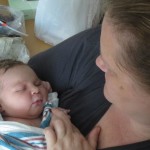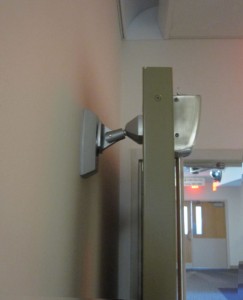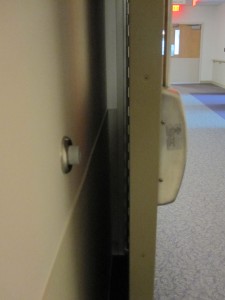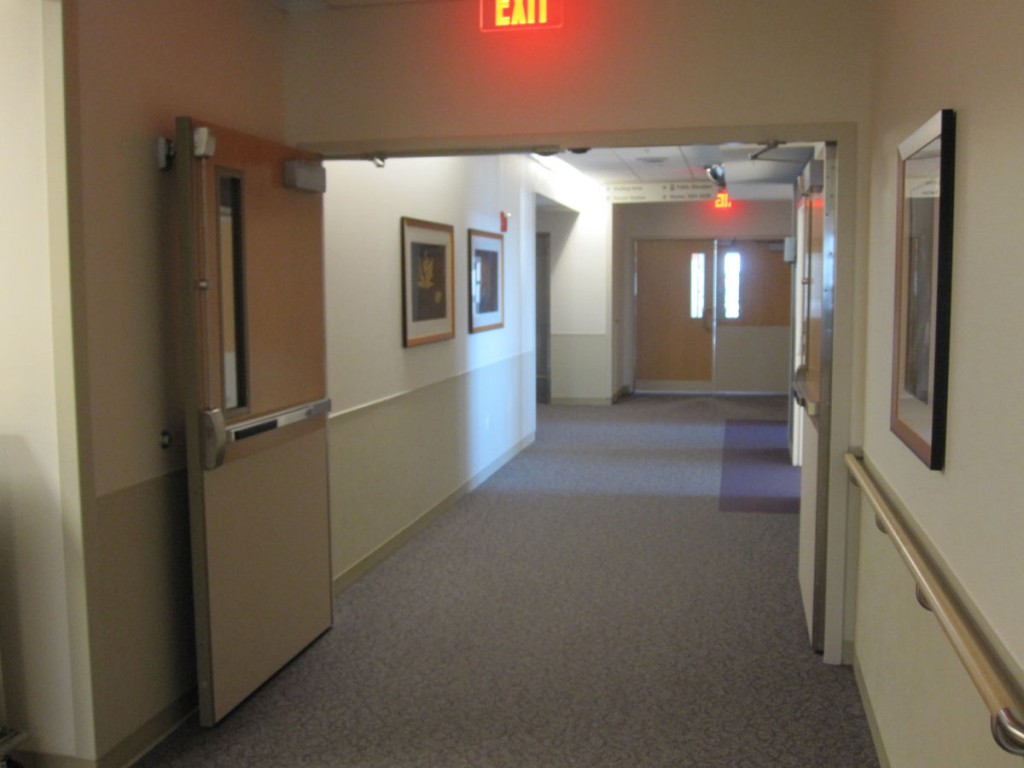
 I’m sorry I’ve been incommunicado this week…sometimes life gets in the way of hardware. When I agreed to lend a hand to my sister-in-law during the birth of my niece, I had no idea it would take 4 days! The good news is that my niece has arrived, and I was able to spend 4 days wandering the hospital halls looking at the hardware.
I’m sorry I’ve been incommunicado this week…sometimes life gets in the way of hardware. When I agreed to lend a hand to my sister-in-law during the birth of my niece, I had no idea it would take 4 days! The good news is that my niece has arrived, and I was able to spend 4 days wandering the hospital halls looking at the hardware.
One interesting thing about this maternity ward was that it was a completely secure unit. There was a security desk in the lobby, and secure access to the elevator via prox card after 8 p.m. A button at the nurses’ station was used to allow access to the unit from the elevator lobby, as well as egress from the unit, through doors equipped with mag-locks. The stair doors had prox card readers as well, although I couldn’t tell whether they were alarmed or equipped with mag-locks. They did not appear to have delayed egress locks. There was also a system (called “Baby Lojack” by the nurses) which sounded an alarm if a baby was taken to certain areas of the unit. In some hospitals the system arms delayed egress locks when the baby is brought into the vicinity, but since this was a completely locked ward it only sounded an alarm near the staff elevators.
There was a change in the 2009 edition of the IBC regarding the locking of I-2 occupancies, which I will cover in an upcoming post. In the meantime, here’s a double egress opening that was right outside the kitchen where I had to hide from the laboring and starving mother and scarf down a couple of pieces of pizza in the middle of the night.
Most of the doors on the unit had combination stainless steel edge guards and continuous hinges. The cross-corridor doors had less bottom rod (LBR) exit devices and were held open on magnetic holders. The pictures at right clearly illustrate one of my pet peeves…wall stops used for doors with magnetic holders. The door never reaches the wall stop! If an additional stop is needed in high-abuse situations (ie. schools), I typically specify a floor stop because it can be installed after the magnetic holder has established the degree of opening.
The most exciting thing (yes, I do realize how weird that sounds) was that it had a sticker on the hinge indicating that the opening had been inspected in 2009 by a CERTIFIED FIRE DOOR INSPECTOR!!! WOOHOO!
You need to login or register to bookmark/favorite this content.







Lori,
Glad all is fine with mother and baby. Now in regards to your pet peeve. The magnetic holders are NOT always furnished with the hardware they are furnished and installed by the electrician. The hardware installer hangs the door and hardware that is listed in the hardware schedule. The wall stop is installed before the magnetic holder now if the wall stop is removed you have a hole in the wall. No expense to leave the stop but a large expense to repair hole. Useing floor stops sounds good but in a hospital they need to wash and sterilize the floors.
Keep up your good work on the blog.
You’re right Charlie! The magnetic holders could have been installed after the hardware by someone else. I always specify them in the hardware sets but I didn’t specify this project. I wouldn’t use floor stops in a hospital, but in a school sometimes the kids push on the door for whatever reason so I often use a floor stop to help keep the bottom of the door in the same plane. On the hospital pair, the other leaf had a railing behind it, so there was no stop. Another thing I found interesting was that the non-hold-open double egress pairs (like the pair visible in the distance) had pulls as well as push plates. In hardware school we were always taught that there shouldn’t be pulls because the traffic flow should be through the door that swings away from you. It made me wonder if there was a reason that the hospital staff wanted the pulls.
– Lori
P.S. The unused wall stops are still a pet peeve. 🙂